

Nov 24, 2021Bees to the rescue: Protect your crops — on a micro level — while saving on labor and costs
{Sponsored} With industry-wide labor challenges persisting and growers facing increased costs, finding solutions that mitigate these factors is of utmost urgency. When regulations around amounts of chemicals that can be used are also considered, the stakes grow steeper. How can growers today address a tri-factor of challenges – disease management, crop yield and rising farming costs?
A new technology on the market, Bee Vectoring Technology (BVT), meets these challenges head-on and offers growers an elegant solution to improve productivity and save labor and costs while also reducing a farm’s impact on the environment – through commercially reared and managed honeybees and bumble bees.
Especially effective on almonds, blackberries, blueberries, raspberries and strawberries, the technology puts a natural fungicide exactly where it’s most-needed: right on the blossoms, through the process of bee vectoring. When initiated at the start of the bloom period, this technology is extremely effective at preventing common fungal diseases in these crops.
How bee vectoring works
With BVT’s VectorHive™ system, bees themselves deliver a biofungicide spore, Vectorite™ with CR-7, from hives to blooms. As bees exit the hive to forage pollen, they travel through the VectorHive dispenser and pick up minute amounts of the biofungicide, bringing it with them to the blossoms, a common vector point for common fungal diseases that affect these crops.
The trace amounts of the biofungicide carried by the bees do not harm them but do provide enough spores to allow the biofungicide to colonize on the blossom, becoming bound to it at a cellular level. The endophytic fungus will not wash away with rain or irrigation. With each pass of bees pollinating the blossoms, more spores are transmitted, which continually protects them from common fungal diseases like Monilinia mummy berry, Colletotrichum anthracnose, and Botrytis gray mold in berries and Molinia brown rot and Botrytis jacket rot in almonds.
Unlike with many traditional chemistries, there is no risk of resistance since there is no competition for this proprietary biofungicide. Growers are not limited to using this spore alone; for high disease pressure or the perfect conditions in which fungal diseases can proliferate, growers can add traditional sprays to reduce common fungal diseases across the plant, if needed.
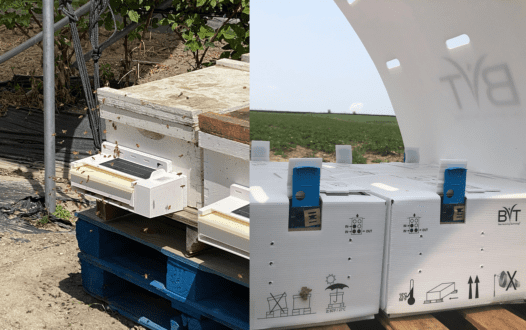

How bee vectoring reduces labor and cost
Unlike with many traditional chemistries (such as spray fungicide applications), which have to be timed carefully around preharvest, weather (like delays in spraying after a rainfall or with wet inaccessible fields) and when labor needs to be in the fields, BVT’s biofungicide is applied every time bees visit blossoms (which bees do continuously, day after day; unlike spraying with the wait intervals between applications).
BVT can be the foundation of a strong integrated pest and disease management program; as a preventative agent, the biofungicide spore helps to reduce or eliminate sprays that usually would be done during the bloom period in a growing season. This means that if growers are using chemistries restricted to four or five sprays per season for the same disease control objective, they can use less than the limit (and save on this costly application) or else save those sprays for later in the season in case of high disease pressure.
This also means that tractors can be used less often at a rate of two to three times less than without BVT, saving growers labor, time, fuel and wear on their heavy machinery. Instead of fogging a field and causing runoff, bee vectoring a biofungicide allows the micro-targeting of blossoms with a spore that will never result in environmental damage the likes that are seen with fogged or sprayed chemistries.
As a result, growers see a reduction in not only labor, but also in the quantity of traditional fungicides used, less coordination around re-entry or pre-harvest intervals, and training that would be required for keeping chemical applicators safe. And let’s not forget about the challenges of spraying in hoop houses!


Farming more sustainably
The reduction in traditional fungicide use also protects bees and biodiversity for the future of our crops, industry and world. Bee vectoring is safe for bees and the environment.
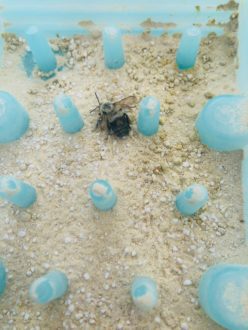

Bees are used to carrying 30% of their body weight in pollen. They carry less than 0.25% of their body weight of Vectorite with CR-7. On average they carry 40,000 spores of CR-7 and only about 100 spores are needed to colonize a flower and protect against disease. With bees usually visiting 5-6 flowers per flight, there are plenty of CR-7 spores from a single bee flight to more than protect several flowers.
The process of bee vectoring also uses no water, while spraying uses hundreds or even thousands of gallons per spray. It’s significantly more precise than spray applications, where spraying leaves 95 per cent of the chemicals behind in the environment, which impacts wild plants, animals and waterways. In contrast, BVT’s targeted approach goes right to the plant with no spillover.
Real-world results
Growers who have adopted BVT are already seeing positive impacts on their operations. Most see that BVT only costs as much as 2-3 sprays with traditional chemistries would in a growing season, so if they spray more without BVT, they’ll find big savings after adding BVT.
“Our bloom sprays, we used to probably do four to five bloom applications to petal fall applications, and I would say, you know, weather dependent, we’ve eliminated two of those. This year with good weather, I think we’ve eliminated three of them,” said Diskin Morgan of Morgan Blueberry Farms in Georgia.
Morgan saw a quick ROI on BVT and was able to pay for the technology by eliminating just a couple of sprays.
“In terms of the ROI, I would say that if you look at eliminating a couple of sprays, you’ve essentially paid for the product. You’ve got to have bees anyhow to get pollinated, so that’s really a sunk cost. And then from there, you know, you’re spending extra on the active. In your case, the active is coming in a powder. So yeah, I would say overall, the ROI, if you eliminate two sprays, you’re pretty much dead money,” said Morgan.
Jim Roofener of Oak Nursery in Oregon, who is an organic grower, saw significantly less fungal disease when BVT was used on his fields than any of the other products he tried.
“The cost per acre is minuscule with the BVT versus doing things manually, trying to put the other products on that were just not effective at all,” said Roofener. And here’s what he had to say about using other products, “With organics, we don’t have a lot of options. And we tried every option out there and it was, in my opinion, like putting water on the plants.”


For John Bennett of Alma Sunbelt Blueberries in Georgia, it changed the game for his labor challenges. “Twice a week, (we) have to change the trays, but that’s not a big deal. You know on these hundred acres, it takes us about an hour and a half,” Bennett said.
Bennett no longer has to spray as many times in a growing season, “We’re spraying less. We’re still, you know, it’s one of those things that if you should have sprayed, you can’t go back and spray, so we are a little hesitant not to spray some, but we’ve certainly sprayed a lot less than we used to.”
To learn more about what growers have to say about using bee vectoring, make sure to check out these online videos:
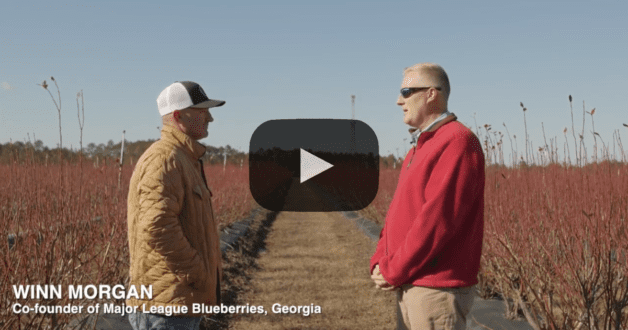

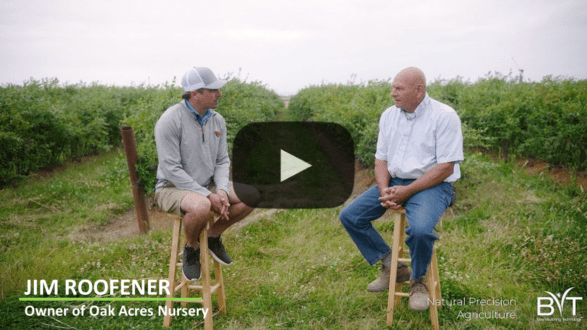

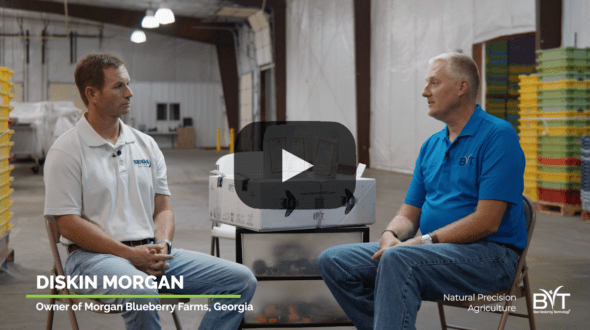

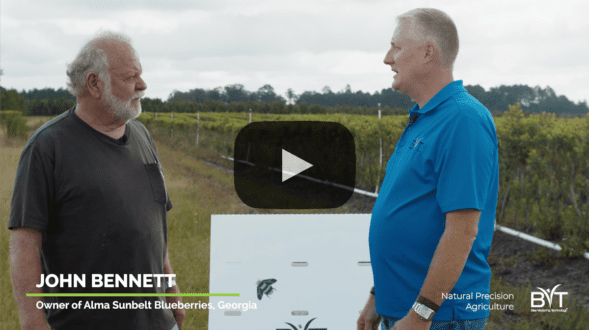

© 2021 Bee Vectoring Technology














